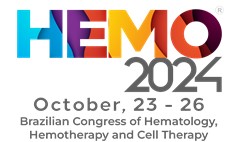
For the first time, we had to organize an induction period for the treatment of acute leukemia in an outpatient setting. The reason was the problems that arose during the hospitalization of patients during COVID-19 infection. to study the effectiveness of the obtained results and to find out the possibility and importance of widespread use of this tactic in the future.
MethodologyThe study group included 25 patients diagnosed with acute leukemia. Among them, 21 patients had lymphoblastic leukemia (19 patients with B-cells, 4 patients with T-cells), 2 patients with myeloblastic leukemia (1 patient with M2, 1 patient with promyelocytic leukemia M3). The age range of the patients was from 2 years to 2 months to 15 years (median = 8.5-years). The male/female ratio was 10/15. Treatment of acute lymphoblastic leukemia was carried out according to the Moscow-Berlin-2015 program, the B-ImRG protocol was used in 15 patients, the A-SRG protocol in 2 patients, Bt(12:21) in 2 patients, the T-Low protocol in 1 patient and protocol T-ImRG in 3 patients. In one of the patients with Myeloblastic leukemia (M2), the “7+3” protocol was used, in the other (M3) the APL-.2000 protocol was used.
ResultsObtained showed that the induction period of treatment for patients with acute leukemia can be carried out completely on an outpatient basis. The organization of treatment in the “day hospital + night outpatient” format made it possible to carry out both the main treatment (chemotherapy) and concomitant therapy in a timely and without problems. Replacing intravenous “flush therapy” with oral fluids did not cause serious problems, including “lysis syndrome”. The initial leukocyte count (10.6‒116 × 109/l), as well as the level of blastemia (4%‒99%) and blastosis (45.4%‒96.8%) did not cause serious concern in any patient, despite the standard of concomitant therapy. Biochemical parameters, including nitrogen metabolism parameters, fluctuated within normal limits in all patients. In all patients, the induction course was carried out to the end and ended in complete remission.
ConclusionThe results showed the possibility and prospects of further expansion of outpatient treatment of patients with acute leukemia.






